How AI Is Driving Sustainable Aviation
AI is rewriting aviation’s future: smarter flights, greener airports, and lower emissions, proving the skies can be cleaner and more sustainable.
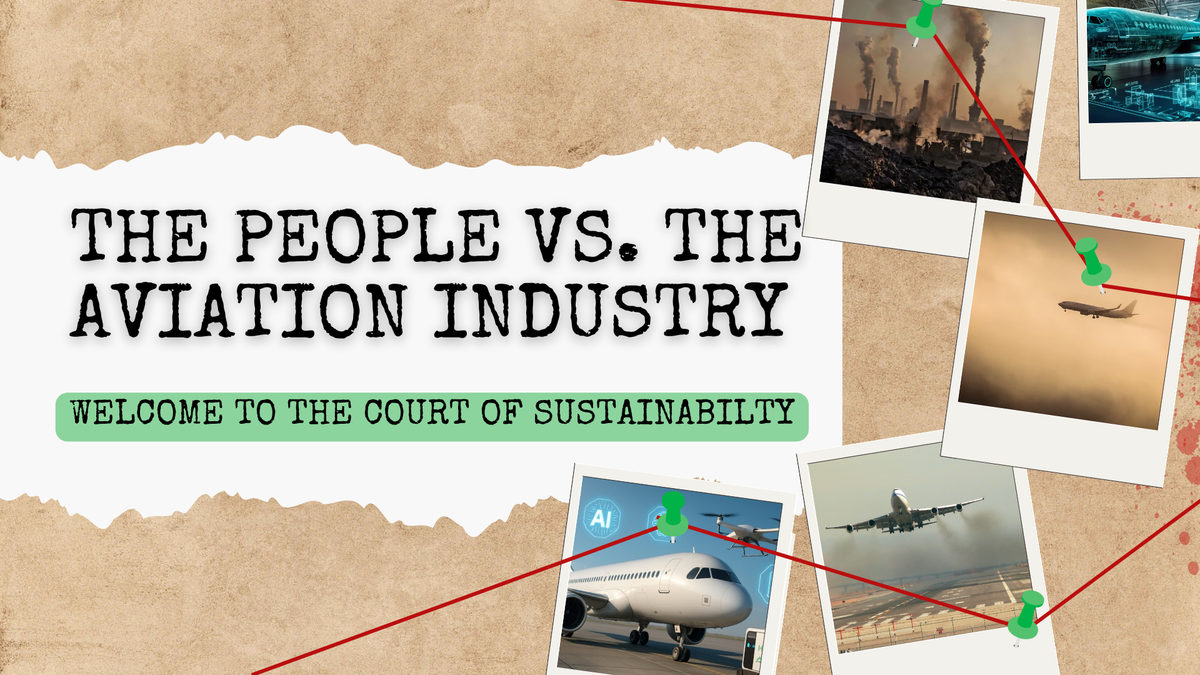
You know that feeling when you’re staring out the airplane window, watching clouds roll by, thinking, “Wow, we’re basically flying metal tubes across the sky- what a time to be alive”… and then that sneaky little voice reminds you: “Yeah, but also… carbon emissions.”
Yeah. That one.
The truth is, as much as we love the magic of flight - the freedom, the adventure, the tiny pretzels - aviation’s environmental footprint is, well, heavy. And in an age where the planet’s thermostat is basically screaming “too hot!”, the aviation industry can’t escape the accusations.
What accusations, you ask?
Well, in this week’s Keeping Up With the Airlines, we’re stepping into the courtroom, where the aviation industry itself will be put on trial. The charge? Being one of the world’s biggest carbon emitters. But don’t worry-it’s also getting the chance to defend itself against these claims.
All rise! The honorable Planet Earth presiding.
Today, in the Court of Sustainability, we gather to hear the case of The People vs. The Aviation Industry.
The charge?
Count One: Contributing 2.5% of the world’s total carbon emissions.
Count Two: Burning millions of gallons of jet fuel, releasing CO₂, nitrogen oxides, and contrails that heat up our already feverish planet.
The prosecution argues that aviation’s jet-setting lifestyle has pushed Earth closer to climate chaos - and it’s time to pay the price.
But before the gavel drops, a figure strides confidently into the courtroom.
It’s none other than the industry’s bold defender: Artificial Intelligence.
Controversial, yes. Misunderstood? Often. But today, AI arrives armed with data, algorithms, and a mission - to prove that the skies can be cleaner, smarter, and sustainable.
Let the record show: AI pleads not guilty on behalf of aviation - and intends to prove it.
Court is now in session.
Opening Arguments
Prosecution:
“Your honor, the aviation industry is one of the biggest culprits in global warming. It emits billions of tons of carbon dioxide annually, guzzles fossil fuels like coffee, and often chooses profit over the planet. We call for immediate sentencing - more regulation, fewer flights, and a full confession of guilt.”
Defense (AI):
“Objection, your honor! While the charges are serious, the defense is prepared to show compelling evidence that technology - especially AI - is transforming aviation from climate criminal to eco-innovator. Through smarter routes, efficient engines, and sustainable operations, AI is helping the skies turn green.”
The judge nods. “Very well. Let’s hear your witnesses.”

Witness #1: AI for Flight Operations Optimization
Bailiff: “Call your first witness.”
Defense: “The defense calls Smart Flight Operations to the stand.”
Testimony:
“Your honor, every flight used to be a one-size-fits-all plan - rigid routes, step climbs, inefficient descents. But with AI, we’ve rewritten the flight plan.”
AI-driven systems like SkyBreathe and OpenAirlines analyze real-time weather, jet streams, and air traffic to chart the most fuel-efficient routes.
No more zig-zagging through the skies or waiting in airborne traffic jams.
✈Continuous Climb and Descent Operations allow smoother altitude changes, cutting fuel burn by thousands of kilograms per flight.
✈Real-time weather prediction helps pilots dodge turbulence and exploit tailwinds - shaving off minutes (and emissions).
Evidence A:
- Air France reported up to 5% fuel savings using AI route optimization tools.
- Each 1% in fuel efficiency can save tens of thousands of tons of CO₂ annually.
Prosecution (grudgingly): “That’s… actually impressive.”
Witness #2: Predictive Maintenance
Defense: “Next, we call AI Predictive Maintenance to the stand.”
Testimony:
“In the past, aircraft were grounded when something broke - reactive maintenance. That meant delays, stranded passengers, backup planes, and wasted fuel. But today, AI acts like a digital guardian angel, monitoring engines and systems in real time.
By analyzing streams of sensor data, digital twins, and flight logs, AI predicts failures before they happen - so maintenance is scheduled only when truly needed.
- Airlines using predictive AI have cut unscheduled maintenance events by 15–30%, extending component life and saving millions in costs.
- Take Rolls-Royce, for example. They use AI and digital twins to keep a virtual eye on their engines mid-flight. The result? Maintenance checks can be stretched by up to 50%, and those annoying surprise groundings get cut way down-so planes stay in the air where they belong.
- Airbus reports predictive tools can cut unplanned downtime by as much as 10–50% .
Fewer surprises mean fewer last-minute aircraft swaps, less wasted fuel from delays, and longer service life for engines and parts."
Evidence B:
- Rolls-Royce’s “IntelligentEngine” uses AI to extend engine service life and optimize maintenance
- Research shows predictive maintenance can cut unscheduled events by ~20%, with cost savings of 12–18%.
- Airlines implementing AI predictive maintenance have reported downtime reductions of up to 30%.
Judge (nodding): “So AI not only saves airlines money - it prevents waste, keeps planes flying safely, and reduces emissions. Duly noted.”
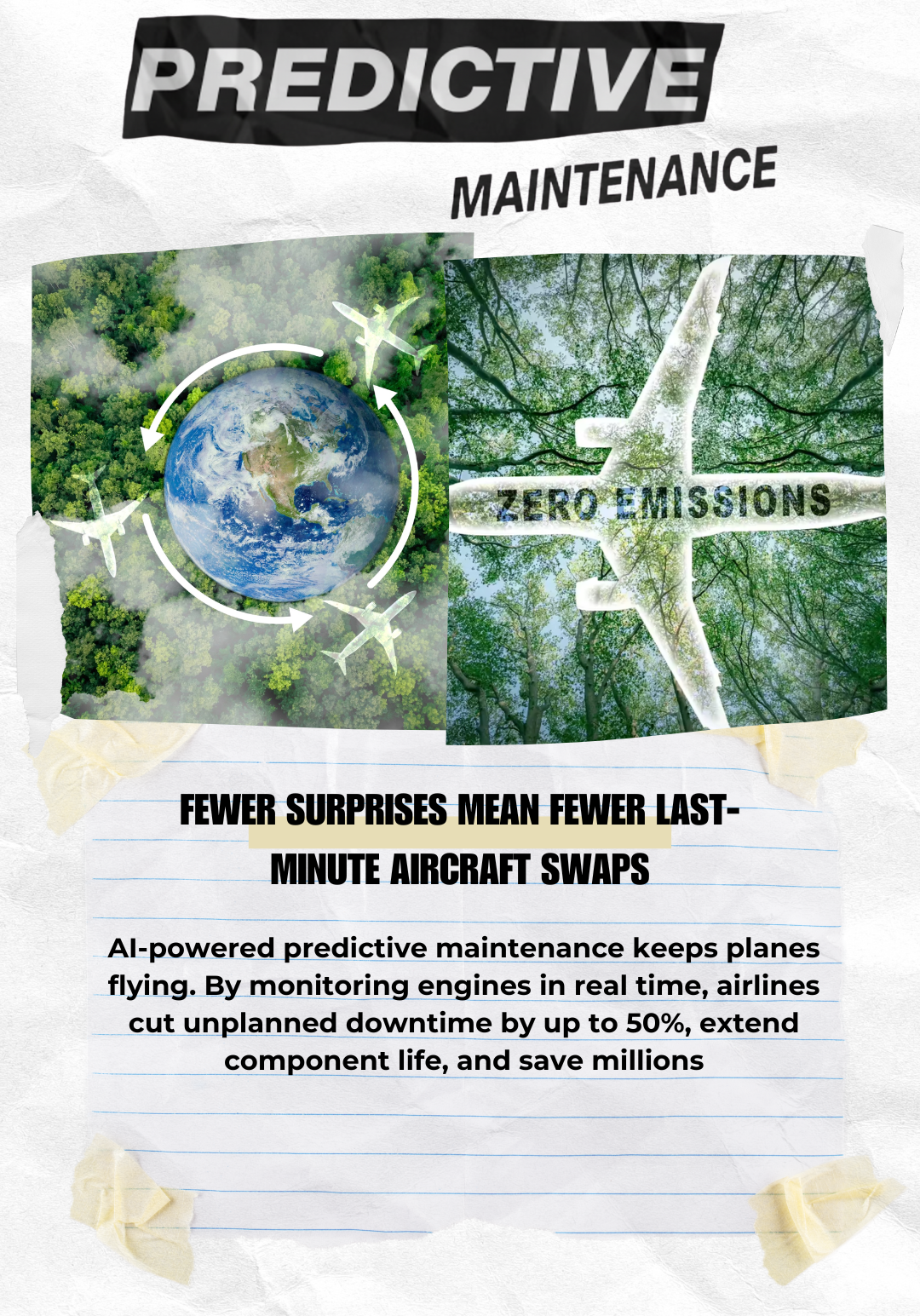
Witness #3: Airport Operations & Ground Efficiency
Defense: “We now call Smart Airports.”
Testimony:
“Your honor, the crime scene isn’t only in the skies - it’s also on the ground. Planes sit around on taxiways wasting fuel, airport gates keep the lights and AC running even when no one’s there, and ground vehicles still use diesel. But AI is stepping in to tidy things up.
- Taxiing: At Schiphol, AI trials with ‘sustainable taxiing’ and smarter routing have slashed taxi fuel use by 50-65% on longer routes. Simulations even show CO₂ from taxiing could drop by as much as 76% per flight.
- Gate Allocation: Airlines using AI systems like Assaia’s and Mosaic’s gate management have cut congestion , reducing ground emissions by 10–20%. AI predicts which gates will be free and when, helping planes move smoothly and avoid wasting fuel while waiting.
- Terminal Energy: Inside the terminals, AI helps airports act smarter - dimming lights when they aren’t needed, fine-tuning heating and cooling so gates aren’t blasting AC into empty spaces, and cutting power waste wherever possible. It’s like having an invisible caretaker, making sure the airport only uses the energy it truly needs
Evidence C:
- Schiphol Airport’s sustainable taxiing program, including TaxiBot towing, slashes taxi fuel use.
- Simulation shows AI-driven taxi routing can cut emissions up to 32.9% at the airport level.
- Mosaic Data Science models predict taxi times and optimize departures, saving thousands of gallons of fuel .
- AI gate allocation tools reduce ground delays and emissions.
Prosecution: “So AI’s not just rewriting the skies - it’s cleaning up the tarmac too?”
Defense: “Exactly.”
Witness #4: Data Analytics & Route Optimization Platforms
Defense: “Next witness: AI Analytics Platforms.”
Testimony:
AI isn’t just making guesses - it’s crunching petabytes of flight data to find invisible inefficiencies.
Platforms like Airbus Skywise and Google Cloud’s AI partnership with American Airlines use predictive modeling to optimize every minute of flight operations.
They’ve achieved measurable results:
- 2–3% reduction in fuel consumption fleet-wide.
- In live trials, AI models helped pilots steer around areas where contrails were likely to form, cutting those heat-trapping contrails by about 54%.
- Enhanced route selection under dynamic weather conditions.
- Real-time decision support for dispatchers and pilots.
Even on the passenger side, AI-powered site such as WhereFlight are helping people track flights in real time, showing how the same technology making aviation more efficient and sustainable is also making travel more transparent for flyers.
Judge: “So AI’s not just smart - it’s also strategic.”
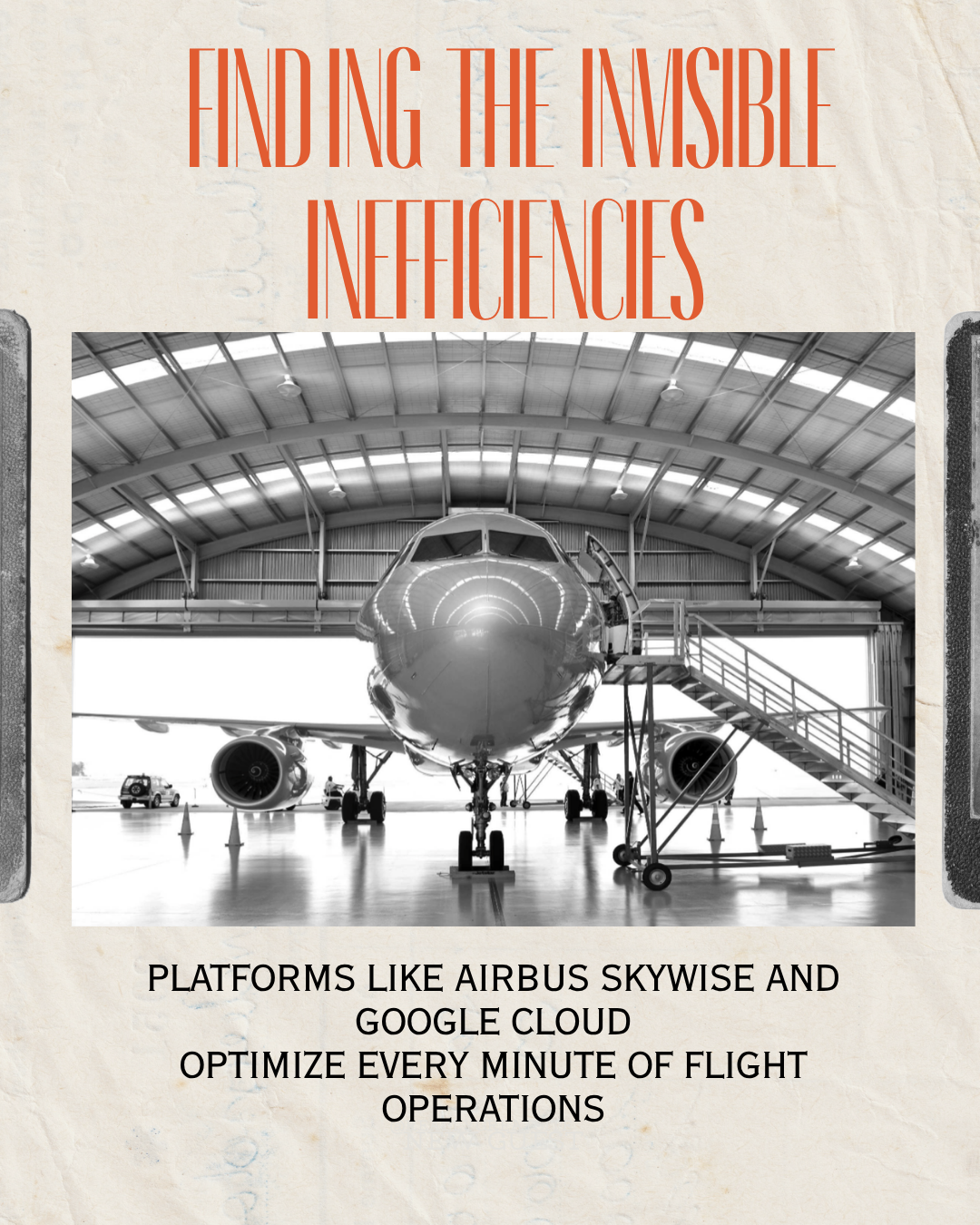
Witness #5: Digital Twins & Future Tech
Defense: “For our final witness, we call AI Innovation.”
Testimony:
“We’re just getting started. With Digital Twins, we can simulate entire fleets virtually - testing designs, optimizing fuel systems, and predicting emissions before a single engine roars.”
And as airports and airlines start using AI to run things automatically - like driverless ground vehicles, planes taxiing themselves, and smarter air traffic control - aviation gets a big step closer to cutting its emissions to zero.
We combine that with Sustainable Aviation Fuels (SAF), and AI becomes the brain guiding the green revolution.
Prosecution: “Hmm… maybe the industry does have a fighting chance.”
Exhibits: Real-World Evidence
- KLM uses AI route optimization → saves tens of thousands of tons of CO₂.
- Lufthansa leverages AI for weather prediction & fuel savings.
- Airbus Skywise supports over 100 airlines with data-driven efficiency.
- Rolls-Royce’s AI engine analytics cut unnecessary flights.
- OpenAirlines’ SkyBreathe → ~2–5% fuel savings.
Each of these examples shows results we can measure today - real improvements, not just promises for the future.
Expert Witness Testimonies
Bailiff: “The court now calls its expert witnesses!”
The defense is ready to prove that AI isn’t just a buzzword - it’s a credible game-changer in aviation’s sustainability case. Let’s hear from the experts.
Witness A: The World Economic Forum (WEF)
“Your honor,” says the WEF strategist, “AI is one of the strongest tools we have to decarbonize aviation. By optimizing flight paths, improving fuel efficiency, and predicting maintenance, AI can help cut emissions by up to 15%.”
They argue that smarter skies start with smarter data - and AI’s algorithms are giving airlines that edge.
Witness B: IATA (International Air Transport Association)
“AI is essential, but not enough on its own,” testifies IATA. “To reach net-zero by 2050, aviation must also scale up Sustainable Aviation Fuels (SAF) - we’ll need around 500 million tonnes annually.”
They warn the court: AI may optimize operations, but without cleaner fuels, the carbon emission are highly unlikely to reduce .
Witness C: WEF + Kearney Report
A joint WEF-Kearney report takes the stand: “Decarbonizing aviation will demand $45 billion in global SAF investment by 2030.”
Their message: AI can definitely steer the ship, but money builds the sails. Without serious funding, we won’t reach the green horizon.
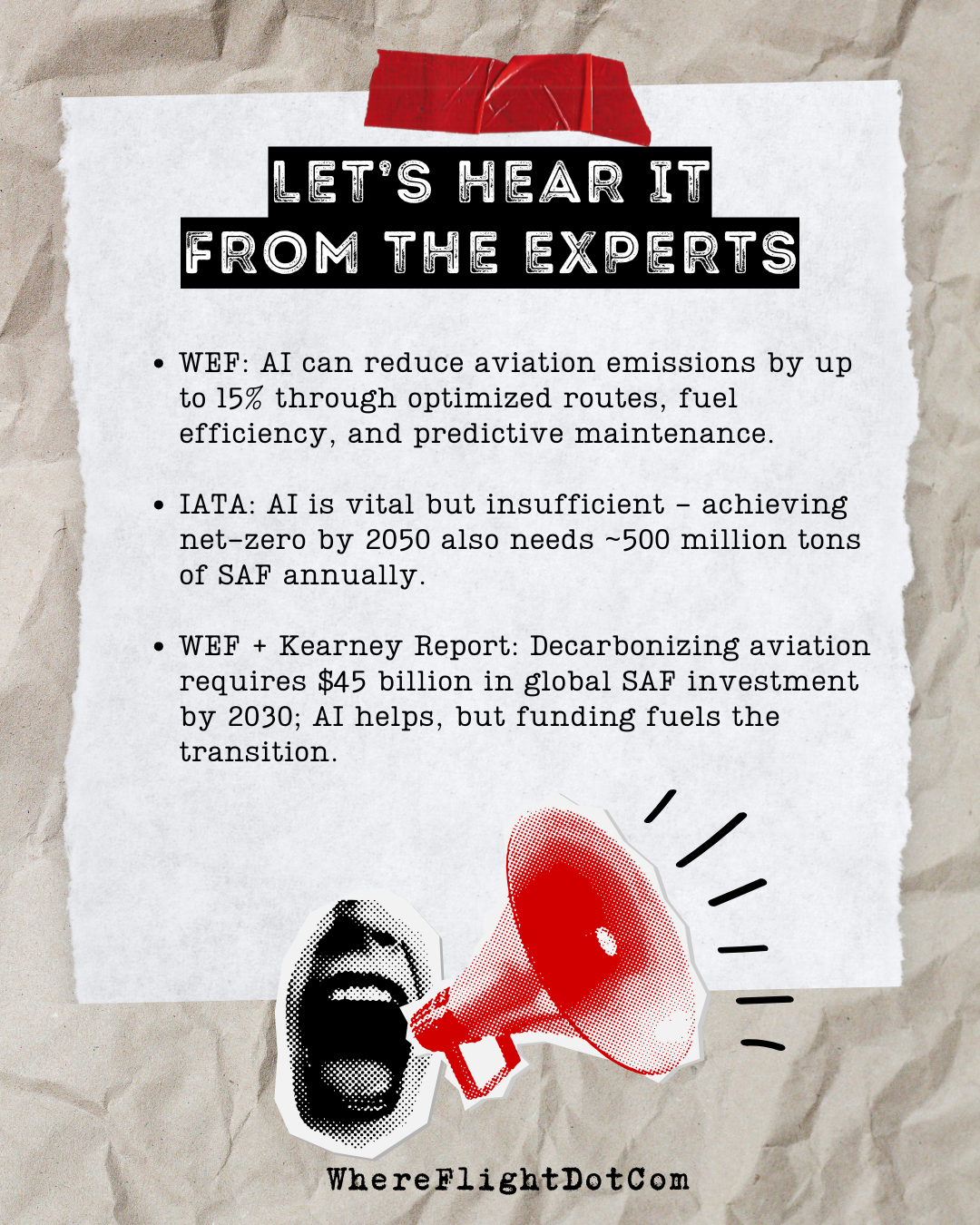
⚖Cross-Examination
Prosecution: “So AI can’t save aviation single-handedly?”
Defense (AI): “Correct, your honor. I’m not a silver bullet - I’m the strategist. Combine me with sustainable fuels, smart policy, and clean energy, and we’ll have a winning case.”
Closing Arguments
Prosecution:
“The aviation industry is still a polluter - and must continue to do more. But we can’t deny that AI is reducing emissions, one flight at a time.”
Defense (AI):
“Your honor, the skies may never be spotless, but with AI at the rescue, they’re getting cleaner. We can’t ground the world - but we can guide it to fly smarter.”
Judge (Planet Earth):
“The court recognizes the gravity of the crime… but also the sincerity of the effort. AI has proven itself a worthy ally. Case dismissed - pending continued progress.”
Gavel bangs.
The aviation industry walks out of court not absolved - but reformed. With AI as its co-pilot, it’s rewriting its legacy:
- Smarter routes
- Cleaner engines
- Greener airports
- A sustainable horizon
The message is clear:
✈We don’t have to stop flying. We just have to start flying smarter.
And if AI can help us do that? Then maybe, just maybe, the skies have a second chance.
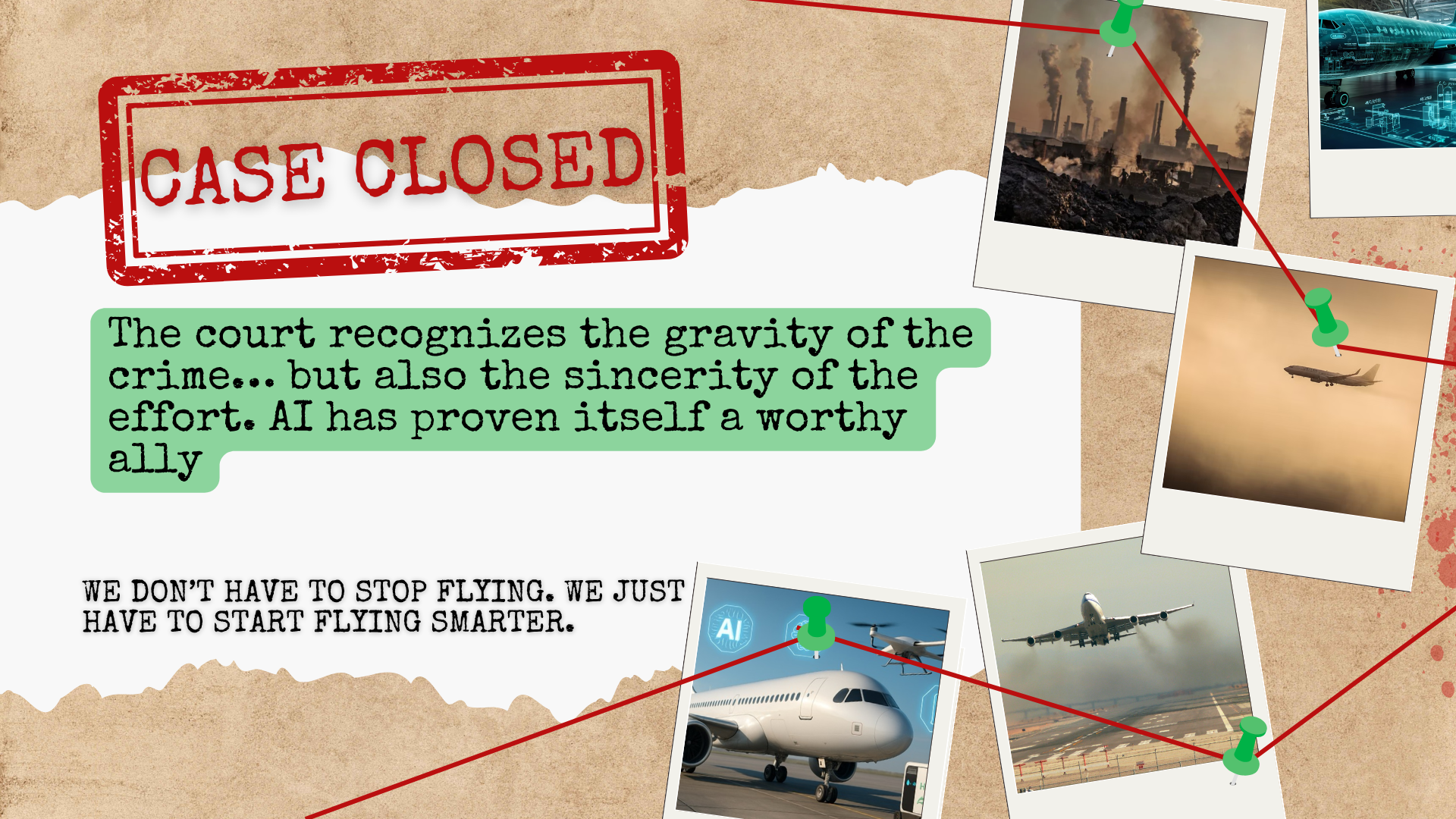
In the end, AI isn’t here to clip aviation’s wings-it’s here to make sure those wings leave a lighter mark on our planet. Smarter flights, greener airports, cleaner skies: the future of flying is already taxiing onto the runway.
Do you want more tales from Keeping Up with the Airlines? Subscribe to our blog and stay updated in the world of aviation !




Comments ()